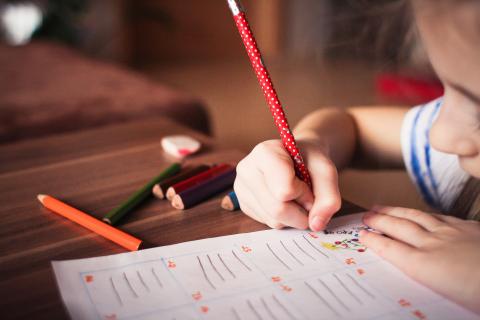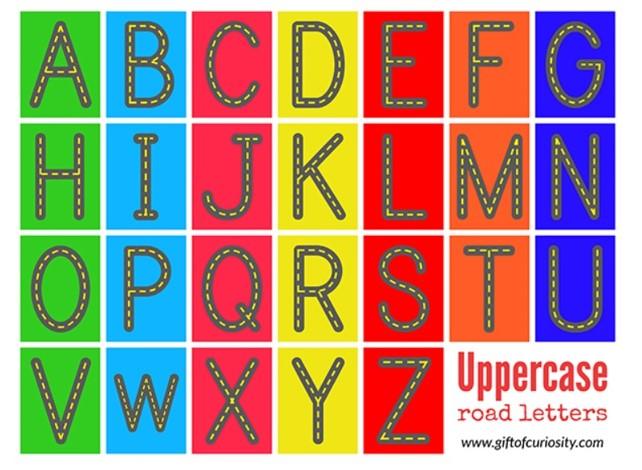
~5 minute read
Although printing may be like second nature to you, it is actually a very complex task. In order to become a successful printer, it is important to first develop the ‘building blocks’ of printing. These skills help develop the core foundations to which printing is built upon. Children who are taught printing before they are truly ready to master the skill may become discouraged and develop poor writing habits. I have highlighted 5 key building blocks below to help get your child started on a path towards printing success! Check how your child performs in these areas and try some of the activity suggestions if they are having any difficulties.
* please note FUNctional Therapy is NOT affiliated with any of links provided in this post. It is your discretion if you would like to download any of the activities and/or subscribe to any of the websites.
1. Upper extremity
In order to use a pencil, you need to have control in your hands. To achieve this, you first must have strength in your trunk and stability in your shoulders. These areas are great contributing factors to our fine motor skills and thus linked to our ability to print.
How to encourage:
- Weight bearing activities such as:
- Animal walks (i.e. bear walk, crab crawl, etc…)
- Wall/chair push ups
- Wheelbarrow walking
- Push and pull games i.e. pulling a wagon or toboggan, pushing a wheelbarrow
- Gymnastics
- Parks (playing on playground equipment)
2. Fine motor control
Your thumb, index finger and middle finger are known as your “skilled fingers”. We want to make these as efficient and strong as possible. They will be the ones manipulating your writing tools and thus impacting upon your print.
How to encourage:
- In-hand manipulation activities such as:
- Picking up coins and placing them into a piggy bank
- Sorting through small objects (i.e. have a handful of pompoms on the table and sort by colour)
- Flicking cotton balls or rolled up pieces of paper. Make a goal and try to score on it!
- Playing with nuts and bolts by taking them on and off
- Strengthening activities such as:
- Using clothespins! You can find creative ways to turn any learning activity into one with using clothespins. Check out some of these fun ideas:
- Writing letters on the clothespins to practice alphabet matching on a template. This site demonstrates how you can achieve this: https://www.youclevermonkey.com/2017/06/letter-sound-circles.html
- Writing the letters of your name on each clothespin and practice sequencing your name (putting the letters of your name in the correct order). See one way to achieve this here: https://www.schooltimesnippets.com/2015/02/clothespin-name-activity.html
- Using clothespins to pick up and sort coloured pompoms such as demonstrated here: https://busytoddler.com/2016/05/pom-pom-sorting-fine-motor-skills-activity
- Using spray bottles! There are so many fun ways to encourage finger strengthening through spray bottle play. Check out some of these ideas:
- Drawing letters in chalk in your driveway/sidewalk and erasing them with your spray bottle. See how this family set up their driveway play: https://www.adabofgluewilldo.com/say-and-spray/
- Washing off your toy cars. Perhaps having fun getting them dirty first! Check out this spin on spray bottle car washing: https://theinspiredtreehouse.com/fine-motor-activities-car-wash/
- Watering indoor or outdoor plants
- Adding food colouring to your bottles for a fun twist. Especially fun to spray snow with in the winter months! In the summer you can change colours of the water in your water tables or buckets.
- Using clothespins! You can find creative ways to turn any learning activity into one with using clothespins. Check out some of these fun ideas:
3. Bilateral coordination
The ability to use both of your hands together, in an effective manner, to accomplish an activity. There are tasks that require your hands to work in synchronicity, such as using a rolling pin. There are also tasks that require one of your hands to do the majority of the work and the other hand to assist. We see this type of coordination with printing as one of your hands will manipulate the writing tool and the helper hand will hold the paper.
How to encourage:
- Musical percussion instruments such as maracas, cymbals and drums
- Interlocking toys that can be pulled apart or pushed together (i.e. Legos)
- Rolling pin and dough
- Opening and closing jars and containers. Have them filled with something fun (i.e. stickers, food, sand, etc…)
- Stringing edible and non-edible objects (i.e. beads, uncooked noodles, popcorn, etc…)
*tip: use a pipe cleaner instead of a string if a string appears too difficult for your child to manipulate - Lace cards
- Blow bubbles and reach with both hands to pop them
- Pull cotton balls apart, glue on paper to make a picture
4. Pre-printing Strokes
│— Ο + / □ \ X Δ
These are shapes that children typically develop prior to learning to form letters. It is usually not until they master a triangle that they will be successful with participating with formal printing instruction from a teacher. If your child has trouble making letters, test their pre-printing strokes and see how many they have. It may make sense that they cannot form a “K” if you see they are unable to form some of the angled strokes.
How to encourage:
- Model how to draw the stroke and have your child imitate you.
- Using multisensory activities:
- Draw your strokes into a dry bin/ tray of materials such as sand, noodles, lentils, etc. You can also try wet bins/ trays of pudding, yogurt, whip cream, etc.
- Use a chalkboard, whiteboard or paper to practice drawing the strokes
- You can find pre-made pre-printing practice sheets here (Laminate them for continued use!): https://www.walkingbytheway.com/blog/pre-writing-pages-introducing-printable-power/
5. Letter recognition
Before learning to print, you need to know what the letters look like. Children will recognize forms and shapes at an earlier age than they can reproduce them. They will also recognize letters prior to being able to name them. Therefore, it is easier for a child to find a letter on a sheet of paper by asking “Find the letter ‘A’” versus asking “What is this letter?” (i.e. you are pointing to the ‘A’). In addition, capitals are the first letters children will recognize.
How to encourage:
- Sing the “ABC” song. While singing, point to the letters in order. Have a capital letter display visible to children.
- Make tactile letters (i.e. pipe cleaner, sand paper, etc.) that the children can trace with fingers
- Letter matching activities
- i.e. Place letters in a bag and have children pull them out one at a time. Children can match the letters to an existing capital letter display.
Watch the "How Can I Help My Child to Print?" webinar to learn more!
About Taunia Clouthier
Taunia Clouthier is an Occupational Therapist who brings 10 years of experience working within the School Health Support OT Services, where she assumes a consultative role in supporting children, parents and staff within the school environment. The skills and knowledge that she has gained over the years has inspired her to create FUNctional Therapy in 2018, a company in which she can further share her knowledge and passions through direct services and workshops. She is very passionate about providing education and believes it is one of the keys to successful growth and development in children.
References
Beery K.E. & Beery N.A. (2010). The Beery-Buktenica Developmental Test of Visual-Motor Integration Sixth Edition Administration, Scoring and Teaching Manual. 30-47
Folio M.R. & Fewell R.R. (2000). Peabody Developmental Motor Scales. Motor Activities Program. Second Edition.
Handwriting Without Tears. (2018). Get Set For School. Readiness & Writing Pre-K Teacher’s Guide
Handwriting Without Tears (2018). Get Set For School. Getting Started with Readiness and Writing Webinar. Retrieved from https://www.lwtears.com/training/back-to-school-webinars-early-learning
Pollock N., Lockhart J., Blowes B., Semple K., Webster M., Farhat L., Jacobson J., Bradley J. & Brunetti, S. (2009). Handwriting Assessment Protocol 2nd Edition. Pg. 10.
Therapy Skill Builders (1991). Forarem, Hand and Finger Control. 215 & 275
DISCLAIMER: This document reflects the views of the author. It is Autism Ontario’s intent to inform and educate. Every situation is unique and while we hope this information is useful, it should be used in the context of broader considerations for each person. Please contact Autism Ontario at info@autismontario.com or 416-246-9592 for permission to reproduce this material for any purpose other than personal use. © 2020 Autism Ontario 416.246.9592 www.autismontario.com




